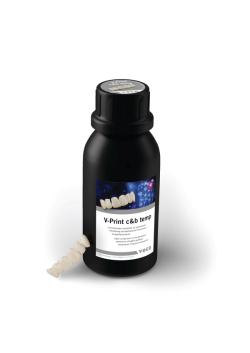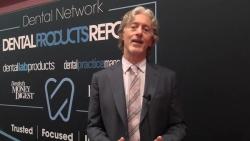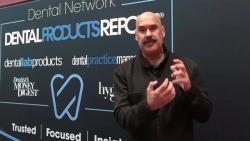- About Us
- Advertise
- Editorial
- Contact Us
- Terms and Conditions
- Privacy Policy
- Do Not Sell My Personal Information
© 2025 MJH Life Sciences™ and Dental Products Report. All rights reserved.
Fixing Social Media-Led Mishaps: How to Help Patients Who Hurt Themselves Following an Online Trend
Let’s explore the challenges of patients consuming health misinformation on social media and offer practical tips to help them find out what they want to know from a reliable source.
Social media provides excellent access to many fun things, from enjoying cat videos to marveling at epic fails. Unfortunately, it also provides access to health misinformation that spreads rapidly.
Today, we explore the challenges many clinicians face in combating the damage of social media’s health misinformation and offer practical tips that can get patients the answers they seek from a reliable source.
Social media has changed how people of all ages seek and exchange health information. A 2022 study in the Canadian Journal of Dental Hygiene reports that as many as 75 percent of people go online for health information worldwide.1
Going to social media for health information has a few concerns. First, while these online sources can provide credible evidence, some use clickbait titles and sensationalized content to attract readers. Also, businesses pay for ad placement on YouTube and other platforms, which affects how content is pushed to viewers and influences what users see and in what order. Additionally, product videos, which have a specific agenda regarding their message, are typically shorter than educational ones, and research indicates shorter videos get more views than longer ones.1
The volume of searching combined with the popularity of sensationalized and promoted videos that are product- rather than education-focused, creates a breeding ground for health misinformation.
Inaccurate or misleading health-related assertions lacking scientific backing are not just a nuisance. They are a serious threat, posing significant challenges to public health efforts.2
Jason Goodchild, DMD, vice president of clinical affairs at Premier Dental Products Company, says the problem is compounded by the general public's easy access to dental equipment and materials online. Anyone can buy dental equipment without a license on auction sites and other online retailers, from curing lights to drills to curettes and explorers, among other dental tools and materials. This access takes DIY dentistry to a whole new level, he says.
“It’s amazing what you can buy off the internet without being a dentist,” Dr Goodchild says.
What Are Some Examples of These Social-Media-Led mishaps?
In dentistry, the prevalence of misinformation has escalated, with articles promoting homemade remedies and incorrect dental advice gaining traction.2 Consider the following examples compiled by the University of Pennsylvania UPenn School of Dental Medicine:
- Some social media influencers advocated for patients to file down uneven teeth in the anterior with an emery board, usually used to file fingernails.
- Multiple influencers have claimed that oil pulling or swishing with oil, such as coconut oil, for 10 to 20 minutes will protect your teeth from decay.
- Many people have DIY solutions for teeth spacing problems, from wrapping rubber bands around the anterior teeth to closing a diastema to putting on or removing brackets and wires.3
Delta Dental compiled a list of dental misinformation that they, too, found online:
- Using household cleaning products to whiten teeth: TikTok user @theheatherdunn advocated using pieces of Mr. Clean Magic Eraser to whiten teeth, dismissing potential dental concerns.
- Do-it-yourself orthodontics: A TikTok user wrapped her front teeth with elastic hair ties to close a gap, risking tooth loss and gum inflammation.
- Making prosthetic teeth and partial dentures with art supplies: TikTok users molded InstaMorph beads into prosthetic teeth, which are not FDA-certified for dental use.
- Creating “shark teeth” for crowns: Some individuals file their teeth into narrow pegs for crowns or veneers, risking permanent damage.
- Gluing vampire fangs to teeth: Users glued vampire fangs to their teeth with toxic adhesives, ignoring the risks of permanent damage.
- Bleaching and Flossing with Unusual Materials: Users applied hydrogen peroxide directly to their teeth for whitening and promoted flossing with human hair, demonstrating a disregard for dental safety and professional advice.4
So, What Should You Do If a Patient Comes in with DIY Dentistry?
In some cases, there might be trauma involved, so the first order of business is to stop the damage. The International Association of Dental Traumatology has guidelines that can help. (View their guidelines for fractures and luxation in this handy PDF.)5
Dr Goodchild is thankful he doesn’t treat many DIY dentistry mishaps in his operatory. He suspects that part of the reason he doesn’t is that the people who undertake these DIY or social-media-led treatments do so because they don’t have a relationship with a dentist.
However, he does have patients who tell him about something they saw online, and they ask him questions about it. Dr Goodchild considers this an excellent opportunity to open a dialogue about some dental treatments his patients might want to know more about. It also allows Dr Goodchild to communicate that addressing these concerns in the dental office is much safer and healthier than at home without dental training.
Additionally, these discussions give patients an idea of what these treatments might cost. Dr Goodchild thinks that patients do not always know what is possible in modern dentistry treatment or how affordable some solutions are. He says that having these one-on-one discussions about oral health or cosmetic concerns, and setting proper expectations about the financials can provide the information the patient needs to make a better-informed decision.
“If the patient has rough edges on their teeth or wants to make the edges smoother or a little straighter and is looking to use an emery board to fix it at home, I wish they knew they can also do that painlessly and properly at the doctor’s office. Sometimes, I don’t charge for something as easy as that,” Dr Goodchild says.
Additionally, Dr Goodchild says that some people don’t realize that following these trends can cause significant and irreversible damage to their oral health.
“As obvious as it is to us in the dental profession, a lot of people don’t realize that enamel doesn’t grow back,” he says.
Dr Goodchild explains to patients that if they file too much enamel off the edge of their tooth, it’s not coming back. Or, if they damage the root or aggravate the gums with DIY orthodontics, there can be pain and discomfort, and the trauma caused can jeopardize the tooth's health. Moreover, he tells them that the treatments to correct damage caused by DIY dentistry can be costlier than the initial treatment would have been and will require more time at the dentist’s office, which the DIY dentist was trying to avoid.
While social media offers valuable educational resources, the abundance of false material impedes efforts to prevent and manage chronic diseases, including oral health issues. Dentists and dental organizations must address this challenge by providing accurate, evidence-based information and promoting patient oral health literacy.2
The research in the Canadian Journal of Dental Hygiene echoes this sentiment. The research team concluded that oral healthcare professionals are responsible for educating patients on the importance of fact-checking articles before relying on them for oral-health-related information.Moreover, the research team suggests that dentists should prioritize staying on top of these social media trends to address misconceptions about oral healthcare with patients.6
Some dentists have taken the initiative to make science-based educational videos to counteract misinformation. Dr Goodchild thinks that many of these videos are high-quality and well-executed. He also recognizes that producing quality content takes time, so he appreciates the efforts of those clinicians who have undertaken the task of providing a counterpoint.
“It helps with balanced reporting,” Dr Goodchild says.
Dental professionals can also promote accurate information and empower patients to distinguish between credible and misleading content. Confirming the credibility of dental health content requires attention to several elements, like verifying sources and ensuring the publishers don’t have a conflict of interest. Perhaps most importantly, clinicians should encourage their patients to come to them with questions about DIY dental treatments they saw on the internet.2
Dr Goodchild also thinks that if patients want help, most dentists will find a way to help them. He jokes that he sometimes gives away too much dentistry because it feels good to help people when possible. However, these gifts have a way of coming back full circle, he says, through referrals and life-long relationships.
“If nothing else, you have good rapport with patients,” Dr Goodchild says, “so they talk to you and don’t go online looking for DIY solutions.”



